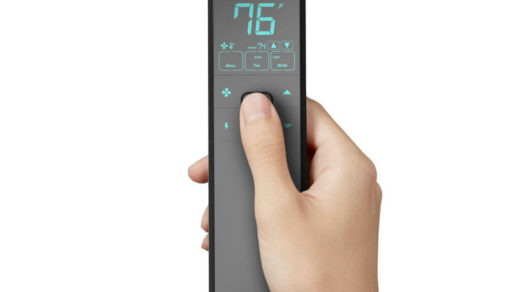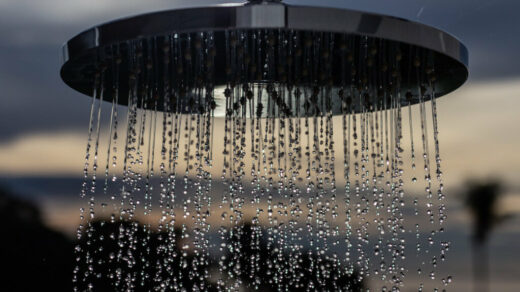The Future of Home Cooling: Geothermal Systems Explained
Explain the Operation of a Geothermal Air Conditioner
Over the last few years, geothermal systems have grown in popularity, and this trend is projected to continue. Geothermal systems use the Earth’s heat energy to provide efficient and long-lasting HVAC solutions, according to GreeDirect, a company that specialises in all air conditioning solutions for residential and commercial uses in Cape Town.
To review, geothermal heating involves circulating a fluid that can transfer heat through a network of underground pipes located either directly beneath your home or near it. That way, the fluid can absorb the heat that the sun has left on Earth. Because the ground below the frost line is a constant 12 degrees celsius all year, this method is effective even in the coldest winters. The ducts in your home serve to evenly distribute the heat from the pump.
How a Geothermal Heat Pump Can Simultaneously Heat and Cool a Home in the Summer
This is because heat transfer is essentially reversible. In a nutshell, here’s why: Heat pumps work by drawing heat from the air as it circulates through your home and transferring it to the fluid that eventually seeps into the ground. Due to the lower temperature of the ground (around 12 degrees celsius), heat is transferred from the fluid to the ground. The process of extracting heat from the circulated air, transmitting that heat to the ground, and then returning cool air to your home is responsible for the chill you feel when you turn on the fan. For a more thorough breakdown, consider the following:
- Your heat pump’s cycle kicks off when the compressor boosts the refrigerant’s pressure and temperature. Moving through the condenser, this hot refrigerant warms the ground loop fluid. The ground loop pipes carry this fluid, which is heated, to the ground below.
- The heat pump, however, is where we must return. The expansion valve lowers the temperature and pressure of the refrigerant after it has lost heat to the ground loops. The cooled refrigerant is passed through the evaporator coil, where it meets the hot air from inside your home. Warm indoor air is cooled because the cold refrigerant draws the heat out of it. This process is repeated until the set temperature is reached in the home.
Cost
To clarify, upfront costs are a one-time expense (or a series of one-time expenses if you opt for installment payments), while operational costs are recurring every month. The upfront investment for geothermal HVAC systems is higher than that of conventional HVAC systems, but the operational costs are lower.
Once the initial investment in geothermal AC has been made, the operational costs are much lower than those of traditional AC, making geothermal AC a much more cost-effective option. A glance at your summer electricity bill will reveal the operational savings of geothermal air conditioning. The best part is that your geothermal system will pay for itself in energy savings after a few years. This is the “payback time,” or the time during which you receive money after spending it.
Geothermal HVAC systems are more expensive than conventional ones, but homeowners can take advantage of federal, state, and utility incentives to offset the initial investment. Since geothermal heating and cooling systems don’t require the use of fossil fuels, renewable energy incentive programs can be a powerful tool for persuading reluctant homeowners to make the switch. As a result of these tax breaks, the initial investment in a geothermal system is lower than it otherwise would be, while the ongoing costs are held constant. You can reduce your geothermal system’s “payback period” to as little as five years if you take advantage of tax credits and other rebates.
Convenience
If you’re looking for a more convenient heating and cooling system, look no further than geothermal. To what end would you not want to streamline your processes and cut down on the number of moving parts needed to get the job done? Various appliances perform various tasks in traditional HVAC systems. Different factors, such as time of year, play a role in the operation of these mechanisms.
Perhaps you use a central furnace that burns oil, gas, or electricity to keep your house toasty warm. Or perhaps you have an oil, gas, or coal-fired boiler. Perhaps, in addition to a wood-burning stove or fireplace, you also make use of gas-fired or electric space heaters. Then, in the heat of summer, you switch your focus to the central air conditioner, with all of its indoor and outdoor components. To be effective year-round, traditional heating and cooling must employ at least two separate methods.
The only two components of a geothermal system are ground loops and a heat pump. In addition to saving money, space, and a ton of hassle, this straightforward and efficient system can also provide heating and cooling. One piece of HVAC equipment that can be used year-round saves you the trouble of installing, operating, and maintaining two systems.
The Role of Upkeep in Determining Durability
The average lifespan of a conventional central air conditioning system is 12–15 years. There is typically a significant decline in efficiency beginning somewhere between the fifth and tenth year, as the main components deteriorate. Due to the compressor’s vulnerability to the elements, they need to be serviced more frequently and cost more to repair.
The pump in a geothermal air conditioning system can last for more than 20 years, and the piping in the ground can last for more than 50. They have a long lifespan and minimal upkeep needs. Geothermal systems’ working components are protected from the elements, so they last for a very long time and continue to function at a high level of efficiency.
Because the ground loops are buried deep underground and the heat pump is housed indoors, a geothermal system has a long lifespan without the need for regular maintenance. Extreme temperature swings and abrasive weather like snow and hail are much less likely to cause damage to either component of a geothermal system. On the other hand, traditional AC units are installed above ground and outside, where they are subjected to the elements and wear down over time. Therefore, it is strongly recommended, if not required, to perform routine system maintenance.
Comfort
Although traditional air conditioners have a bad rap for their loud operation, the reason for this is not a secret. By releasing indoor heat into the hot outdoors, conventional AC units waste a lot of energy while fighting an uphill battle against science. Because they pump warm air from inside the house down into the ground, geothermal air conditioners are much less audible. In the heat of the summer, you won’t have to stress about whether or not your air conditioner is getting enough use.
Where Can I Learn More About the Risks of Using Geothermal Air Conditioning to the Environment and Human Health?
Geothermal cooling has zero adverse health effects and zero negative environmental effects. To warm or cool your home, a geothermal HVAC system only needs access to electricity and the earth’s temperature. Unfortunately, some utility companies only supply electricity that is not generated from renewable resources, so geothermal HVAC may not always be completely renewable. While geothermal does use nonrenewable energy, it does so in a roundabout way, it still uses far fewer fossil fuels than conventional HVAC systems. Overall, then, replacing traditional air conditioning with geothermal systems is better for the planet.
When considering the effects on human health, geothermal HVAC systems also fare better than their traditional counterparts. Turning on the heat in the winter generates carbon monoxide, a gas that is poisonous and can even be fatal, from traditional combustion-based heating systems. Carbon monoxide has no discernible smell, taste, or appearance, making it difficult to detect before it is too late.
However, geothermal heating, ventilation, and air conditioning (HVAC) systems never use fossil fuels, ever. Nobody in your household needs to worry about getting sick when using geothermal. Even better, because no fossil fuels are being burned, neither fumes nor particulate matter will be released into the air inside your home.
This is not only important for the air quality in your house, but for the air quality everywhere. One of the most significant things you can do to help the environment is to switch to a geothermal heating and cooling system. More than 100 million metric tons of carbon dioxide are released annually from air conditioners in the United States.
Are You a Candidate for a Geothermal Heating and Cooling System?
When compared to traditional air conditioning systems, which can have detrimental effects on both the environment and human health, geothermal is a much better option.


